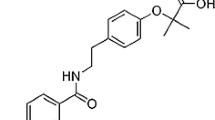Abstract
(−)-Epigallocatechin gallate (EGCG), a catechin polyphenol component, is the main ingredient of green tea extract. Although the anti-carcinogenic and cancer inhibitory effects of EGCG have been widely reported, its genotoxicity is not clear and seldom reported. In this study, we examined the effects of EGCG on DNA strand breaks in the isolated lymphocytes and whole blood lymphocytes obtained from two smoking subjects and a nonsmoking healthy subject using a single cell gel electrophoresis (SCG) assay. The results showed that after 2 hrs of treating the isolated lymphocytes from the smokers, EGCG induced a significant, increase in DNA strand breaks at concentrations from 2.5×10−5 M to 2.0×10−4 M, while after 2 hrs of treating the whole blood obtained from the same smokers, EGCG suppressed the DNA strand breaks in the lymphocytes at concentrations of 1.0×10−4 M and 2.0×10−4 M. A similar suppressive result was also shown in the whole blood lymphocytes from the nonsmoker at nearly the same concentrations, while at concentrations of 1.0×10−3 M or 2.0×10−3 M, EGCG induced a significant increase in DNA strand breaks in the whole blood lymphocytes from the nonsmoker. This result suggests that EGCG is not only inhibitory against DNA strand breaks in whole blood, but also genotoxic to the isolated or whole blood lymphocytes at high concentrations. Thus, more research is needed to comprehensively assess the effects of EGCG on genetic materials.
Similar content being viewed by others
References
Asano Y, Okamura S, Ogo T, Eto T, Otsuka T, Niho Y, Effect of (−)-epigallocatechin gallate on leukemic blast cells from patients with acute myeloblastic leukemia. Life Sci 1997;60: 135–42.
Hibasami H, Achiwa Y, Fujikawa T, Komiya T. Induction of programmed cell death (apoptosis) in human lymphoid leukemia cells by catechin compounds. Anticancer Res 1996; 16:1943–6.
Paschka AG, Butler R, Young CY. Induction of apoptosis in prostate cancer cell lines by the green tea component, (−)-epigallocatechin-3-gallate. Cancer Lett 1998;130: 1–7.
Otsuka T, Ogo T, Eto T, Asano Y, Suganuma M, Niho Y. Growth inhibition of leukemic cells by (−)-epigallocatechin gallate, the main constituent of green tea. Life Sci 1998;63: 1397–403.
Yamane T, Nakatani H, Kikuoka N, et al. Inhibitory effects and toxicity of green tea polyphenols for gastrointestinal carcinogenesis. Cancer 1996;77: 1662–7.
Sakamoto O, Saita N, Yamasaki H, Tamanoi M, Ando M. Pulmonary granulomatosis caused by aspirated green tea. Chest 1994;106:308–9.
Singh NP, McCoy MT, Tice RR, Schneider EL. A simple technique for quantitation of low levels of DNA damage in individual cells. Exp Cell Res 1988;175: 184–91.
Lu YQ, Takeshita T, Morimoto K. Single-cell Gel Electrophoresis-A Review and Discussion. Environ health Prev Med 1997;2: 53–8.
Betti C, Davini T, Giannessi L, Loprieno N, Barale R. Microgel electrophoresis assay (comet assay) and SCE analysis in human lymphocytes from 100 normal subjects. Mutat Res 1994: 323–33.
Fortini P, Raspaglio G, Falchi M, Dogliotti E. Analysis of DNA alkylation damage and repair in mammalian cells by the comet assay. Mutagenesis 1996;11: 169–75.
Salah N, Miller NJ, Paganga G, Tijburg L, Bolwell GP, Rice-Evans C. Polyphenolic flavanols as scavengers of aqueous phase radicals and as chain-breaking antioxidants. Arch Biochem Biophys 1995;322: 339–46.
Valcic S, Muders A, Jacobsen NE Liebler DC, Timmermann BN. Antioxidant chemistry of green tea catechins. Identification of products of the reaction of (−)-epigallocatechin gallate with peroxyl radicals. Chem Res Toxicol 1999;12: 382–6.
Yang GY, Liao J, Kim K, Yurkow EJ Yang CS. Inhibition of growth and induction of apoptosis in, human cancer cell lines by tea polyphenols. Carcinogenesis 1998;19: 611–6.
Hiramoto K, Ojima N, Sako K, Kikugawa K. Effect of plant phenolics on the formation of the spin-adduct of hydroxyl radical and the DNA strand breaking by hydroxyl radical. Biol Pharm Bull 1996;19: 558–63.
Stone KK, Bermudez E, Pryor WA. Aqueous extracts of cigarette tar containing the tar free radical cause DNA nicks in mammalian cells. Environ Health Perspect 1994;102: Suppl 10: 173–8.
Weitberg AB, Corvese D. Oxygen radicals potentiate the genetic toxicity of tobacco-specific nitrosamines. Clin Genet 1993;43:88–91.
Leanderson P, Faresjo AO, Tagesson C. Green tea polyphenols inhibit oxidant-induced DNA strand breakage in cultured lung cells. Free Radic Biol Med 1997;23: 235–42.
Chung FL, Morse MA, Eklind KI, Xu Y. Inhibition of tobacco-specific nitrosamine-induced lung tumorigenesis by compounds derived from cruciferous vegetables and green tea. Ann NY Acad Sci 1993;686: 186–201 discussion 201–2.
Guo Q, Zhao B, Shen S, Hou J, Hu J, Xin W. ESR study on the structure-antioxidant activity relationship of tea catechins and their epimers. Biochim. Biophys Acta 1999; 1427: 13–23.
Sazuka M, Itoi T, Suzuki Y, Odani S, Koide T, Isemura M. Evidence for the interaction between (−)-epigallocatechin gallate and human plasma proteins fibronectin, fibrinogen, and histidine-rich glycoprotein. Biosci Biotechnol Biochem 1996;60:1317–9.
Guo Q, Zhao B, Li M, Shen S, Xin W. Studies on protective mechanisms of four components of green tea polyphenols against lipid peroxidation in synaptosomes. Biochim Biophys Acta 1996;1304: 210–22.
Lee MJ, Wang ZY, Li H, et al. Analysis of plasma and urinary tea polyphenols in human subjects. Cancer Epidemiol Biomarkers Prev 1995;4: 393–9.
Yang CS, Wang ZY. Tea and cancer. J Natl Cancer Inst 1993;85:1038–49.
Author information
Authors and Affiliations
Corresponding author
Rights and permissions
About this article
Cite this article
Yuquan, L., Takeshita, T. & Morimoto, K. Effects of (−)-epigallocatechin gallate (EGCG) on DNA strand breaks as evaluated by single-cell gel electrophoresis (SCG) in human lymphocytes. Environ Health Prev Med 5, 150–154 (2001). https://doi.org/10.1007/BF02918291
Received:
Accepted:
Issue Date:
DOI: https://doi.org/10.1007/BF02918291




